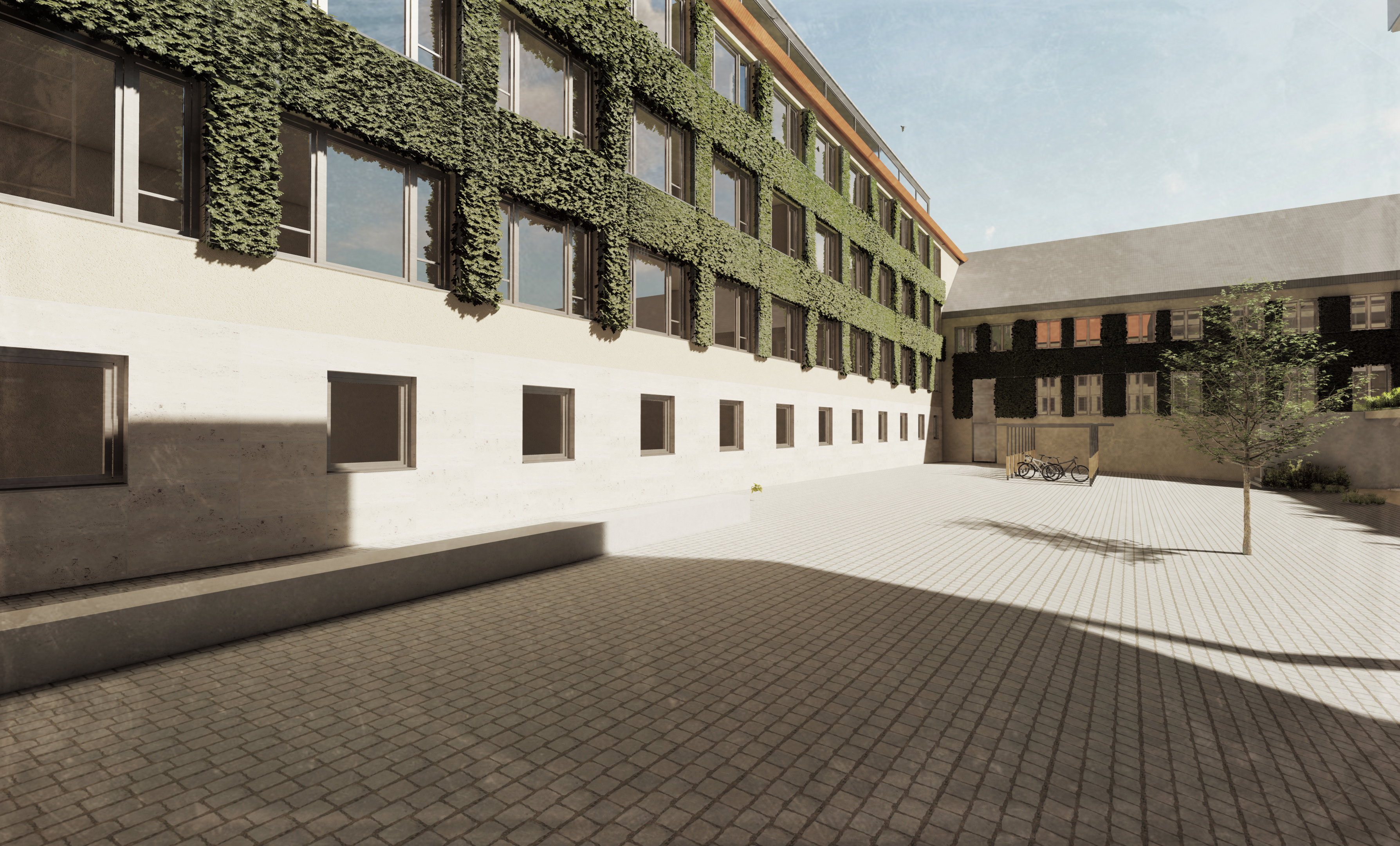Buildings, energy and carbon neutral city

The key challenge of this project is the development of new and advanced methods for data acquisition and determining the energy demands for buildings and neighborhoods. The project intends to demonstrate that a climate-neutral building stock can be realized while preserving existing buildings, in particular historical monuments. The goal of the project is to implement a demonstrator that embodies both climate neutrality and climate resilience.
The project demonstrates nationally as well as internationally which steps in terms of building physics are necessary for the realization of a climate resilient and livable city. By applying machine learning methods in the phase of data acquisition and planning, the demand of resources for construction projects can be reduced and the transformation of the building stock can be accelerated. Smart adaptations of existing buildings and targeted interventions in neighborhoods also offer the opportunity to use previously wasted energy potentials.
«In order to show ways out of the climate crisis and assume social responsibility, the Bauhaus must set an example - away from uninspired architecture and towards climate-friendly cities. These paths require acceleration through appropriate methods and simultaneously have to enforce thoughtful renovations.»
Participating persons:
Prof. Dr.-Ing. Conrad Völker (Professorship of building physics), Alexander Benz (Research Associate at the Professorship of Building Physics, Working Group Energy), Jonas Schmelz (Research Associate at the Professorship of Building Physics, Working Group Energy)
Project
1. 300m Science: From the hidden university to the Science Mile
To the west of Goetheplatz, in the center of Weimar, is the 300 meter long Coudraystrasse. Starting at the Ackerburgerscheunen, Coudraystraße runs parallel to this square between Schwanseestraße and Sophienstiftsplatz. In addition, large parts of Coudraystraße are under monument protection. Despite numerous research institutes, lecture halls and laboratories, the Coudray campus has so far been in the shadow of the campus around the main building. Also due to the online teaching caused by the pandemic, many students do not get to know this part of the Bauhaus University during their studies. Extensive new buildings, renovations and modernizations make the importance of this street clear. Despite this importance for the Bauhaus-Universität Weimar, the street does not yet radiate the character of a campus, nor does the outdoor space invite you to use it or linger.
In the future, Coudraystraße is to be put in the right light as the "Science Mile". The research taking place here should be made visible, the outdoor spaces should be able to be used sensibly by students and employees, ideas should be exchanged and contacts made. This requires sensible concepts, including: areas for research demonstrators in public space and for the transformation from the street to the campus (e.g. entrance situations, road traffic, inner courtyards, green spaces, the effect of the building on visitors). In addition to this redesign, climate neutrality must also be taken into account as a central concern of the Bauhaus University Weimar. Within the course, all measures are therefore also evaluated with regard to the CO2 balance of the campus.
Participating teachers:
Conrad Völker, Alexander Benz, Moritz Pollack
Contact:
Professorship of building physics
Civil Engineering & Architecture and Urbanistics
Prof. Dr.-Ing. Conrad Völker
Phone: +49 (0) 36 43 / 58 47 00
conrad.voelker[at]uni-weimar.de
